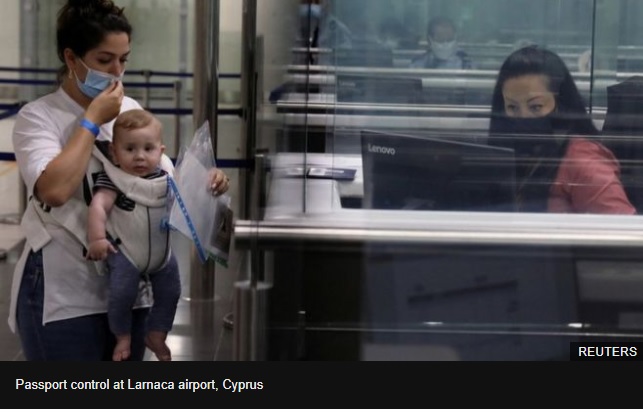BBC News
The EU has decided that from Wednesday EU borders will be reopened to citizens from 15 non-EU countries, including Canada, Morocco and Australia, but not the US, Brazil and Russia.
China is on the list, but subject to a reciprocal agreement, still pending.
The unanimous decision by the European Council is not legally binding, so states can choose not to open up to all those countries.
Diplomats spent five days debating the list, amid varying pandemic concerns.
The so-called “safe travel destinations” are, besides China: Algeria, Australia, Canada, Georgia, Japan, Montenegro, Morocco, New Zealand, Rwanda, Serbia, South Korea, Thailand, Tunisia and Uruguay.
The UK and four other non-EU states – Switzerland, Iceland, Liechtenstein and Norway – are automatically included as “safe”.
The BBC’s Gavin Lee in Brussels says there was intense lobbying by representatives of the US, Russia and Turkey to get included on the list.
EU officials say the decision was based on a number of scientific factors:
- Ensuring that the Covid-19 infection rate in the country was low enough (where nations had fewer than 16 in every 100,000 infected)
- That there was a downward trend of cases
- That social distancing measures were at “a sufficient level”
One diplomat from a north European member state told the BBC that a “certain amount of geopolitics influenced the decision too” and that “Balkan and Eastern European states had recommended” that Georgia, a former Soviet state, be included.ADVERTISEMENT
The Hungarian government is understood to have lobbied for Serbia’s inclusion. Spanish officials say they requested that Morocco be on the list, provided there was an agreement of reciprocity.
Denmark and Austria were among several member states arguing for the number of countries to be fewer than 15.
But in the end, it was adopted unanimously by member states.
Each state will have to announce when it intends to start readmitting citizens from some or all of those countries.
French officials say they expect to implement the decision in the “coming days”.
The Czech Republic has published a list of eight countries that it considers safe for travel.
The EU list will be updated every two weeks.
UK covered by Brexit transition phase
Many border controls have been lifted for EU citizens travelling inside the bloc. Future rules for UK travellers are part of the current Brexit negotiations.
But UK nationals are still to be treated in the same way as EU citizens until the end of the Brexit transition period on 31 December, the EU Commission says.
So during this period UK nationals and their family members are exempt from the EU’s temporary travel restriction.
EU nations in the 26-member Schengen zone normally allow passport-free border crossings for EU citizens, but national authorities have reimposed restrictions in this crisis.
The UK is currently negotiating temporary “air bridges” with several EU member states, so that the coronavirus pandemic does not totally block summer holidays – the busiest season in Europe for tourism, which employs millions of people.
In the EU discussions there were splits between those such as Spain – wanting the boost of tourism, but preferring to play safe because they have been hit so hard by Covid-19 – and others like Greece and Portugal, which depend on tourism but are less scarred by the virus.


You’d think it’d be quite straightforward, deciding which non-EU countries to consider “safe”. But it’s been a tortuous, divisive process, mixing politics and economics, as well as public health.
Countries like Germany and Spain, horrified by the devastation of Covid-19, wanted to play it safe.
They pushed to have a short list of countries with low infection rates, a good health service and reliable health data.
But Greece and Portugal had other ideas. Anxious to boost their post-lockdown, flagging economies with tourism, and less scarred by widespread infection at the height of the pandemic, they wanted as long a list as possible.
Then came France, insisting on reciprocity. If a non-EU country was barring flights from the bloc, argued Paris, they shouldn’t appear on the list.
And finally: diplomatic considerations. How awkward for the EU to include some countries but not others. Thumbs up to visitors from Canada, Japan and China from 1 July – if Beijing allows EU visitors entry – but not travellers from the US.
After days of haggling, the final list is an attempted compromise. Much metaphorical sweat, blood and tears for a list that is advisory only, open to exceptions and will be regularly tweaked and updated.







